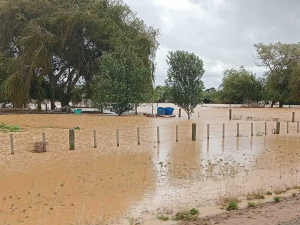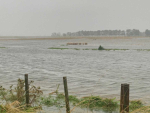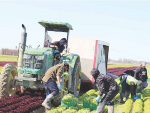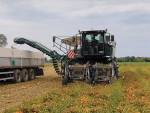Pukekohe vegetable growers fear up to 30% crop losses in the aftermath of recent heavy rain.
They say it came at probably the worst time of year. However, much of the damage won't be apparent until crops are harvested in two to three months' time.
"Everyone has been affected to some degree - some have been hit hard and some not," Pukekohe Vegetable Growers' Association (PVGA) president, Kirit Makan told Hort News.
Rainfall had been variable throughout the area with over 200mm recorded in some areas in just a few hours.
"The potato crops on low-lying land are waterlogged and if it stays wet there will be rotting issues," he says.
Growers were trying to get out on their land to carry out crop spraying and harvest greens where they could. More cost would be involved in replanting crops which had been silted over. It was too early to say whether there would be supply issues on the local market.
"But if this weather sticks around, there could be shortages because things will be out of kilter a bit".
The PVGA was working closely with Horticulture New Zealand to piece together a total picture of the damage which wasn't an easy task.
It was also seeing where it could provide support for growers, by putting them in touch with Rural Support if necessary.
Masters Produce's managing director, Jayant Masters, says 225mm rain fell at their Bombay base, not as much as on growing land at Glenbrook, Patumahoe and Pukekawa.
"But we can't do anything at the moment, it's just slop."
A week later the weather was still overcast and drizzling meaning not a lot of photosynthesis for plant growth. Onions which has been harvested stayed intact on the top of the soil, but there was some superficial staining and could be problems with their storage.
How well the region's soils held up was a credit to growers, who has changed their managment practices and installed silt traps, he says.
"But it will literally create a whole lot of work that wasn't planned and a lot of extra cost. That will mean extended work hours on top of an already very busy schedule."
Hira Bhana director, Bharat Bhana, estimated that the damage could affect from 15 to 30% of crops. On one of their yet to be harvested onion blocks at Onewhero 230mm of rain had fallen.
"The plants' tops were full of water. If they don't dry out soon that water will go into the bulb. I can see problems ahead of us."
The company exports around 80% of its onions but would need to make decisions at a later stage as to whether they were worth sending or not.
Potato crops could rot in the ground if they spent as little as two hours in water and some of the company's lettuce paddocks would just have to be ploughed in.
Some growers who will need to rip up paddocks again where soil had been moved off by the rain before carrying out final tillage before sowing replacement crops.
Fertiliser applications might need to be repeated and more spraying required to combat diseases if the war, humid weather continued.


















